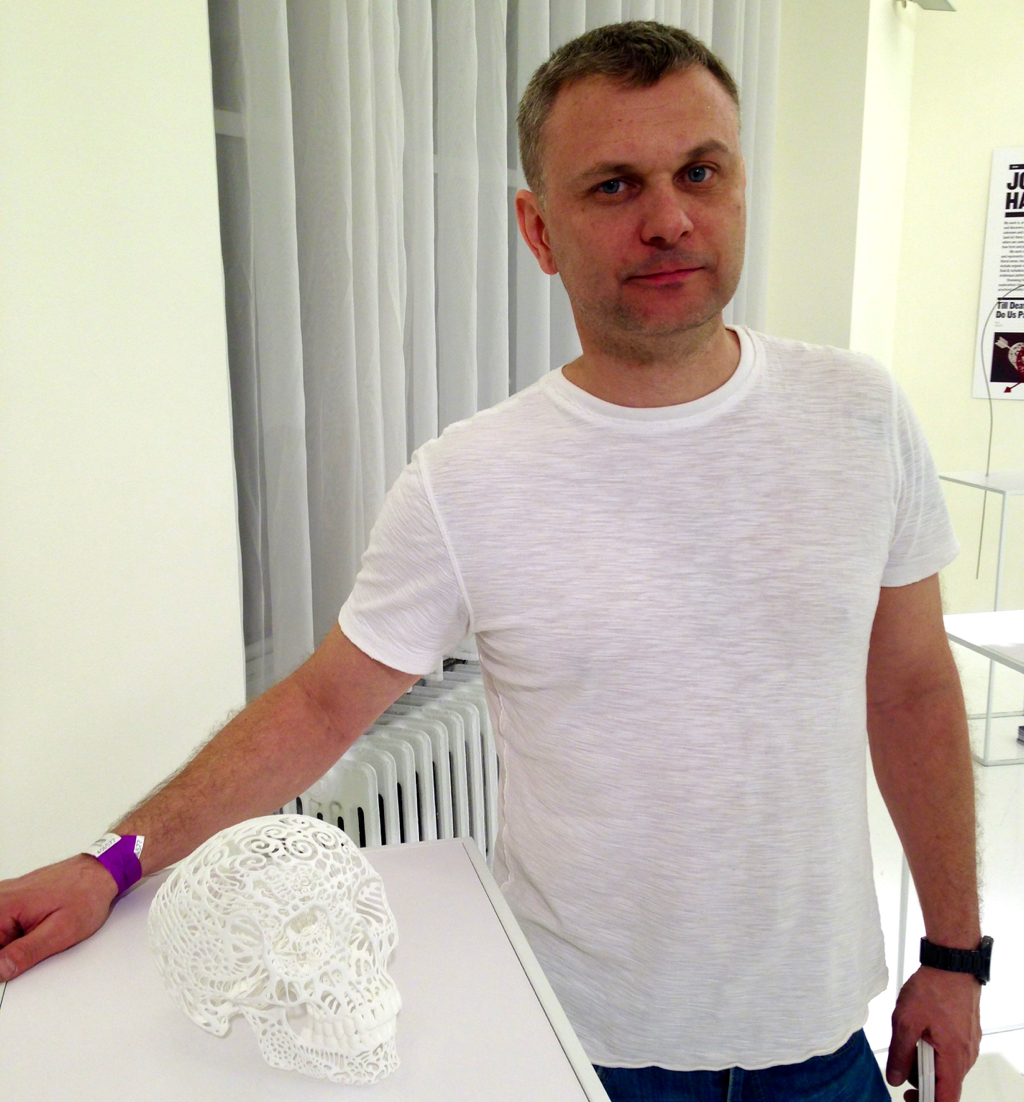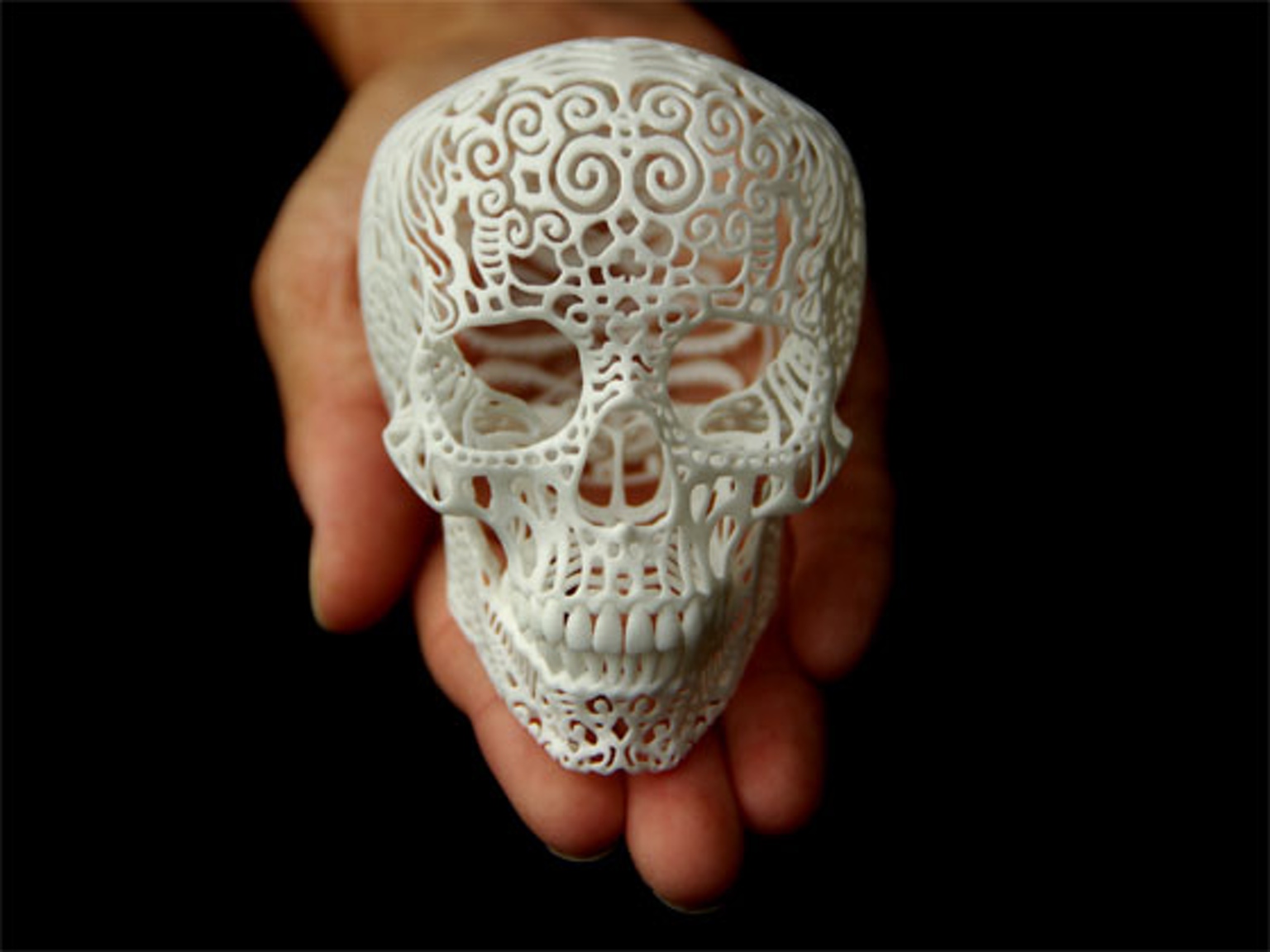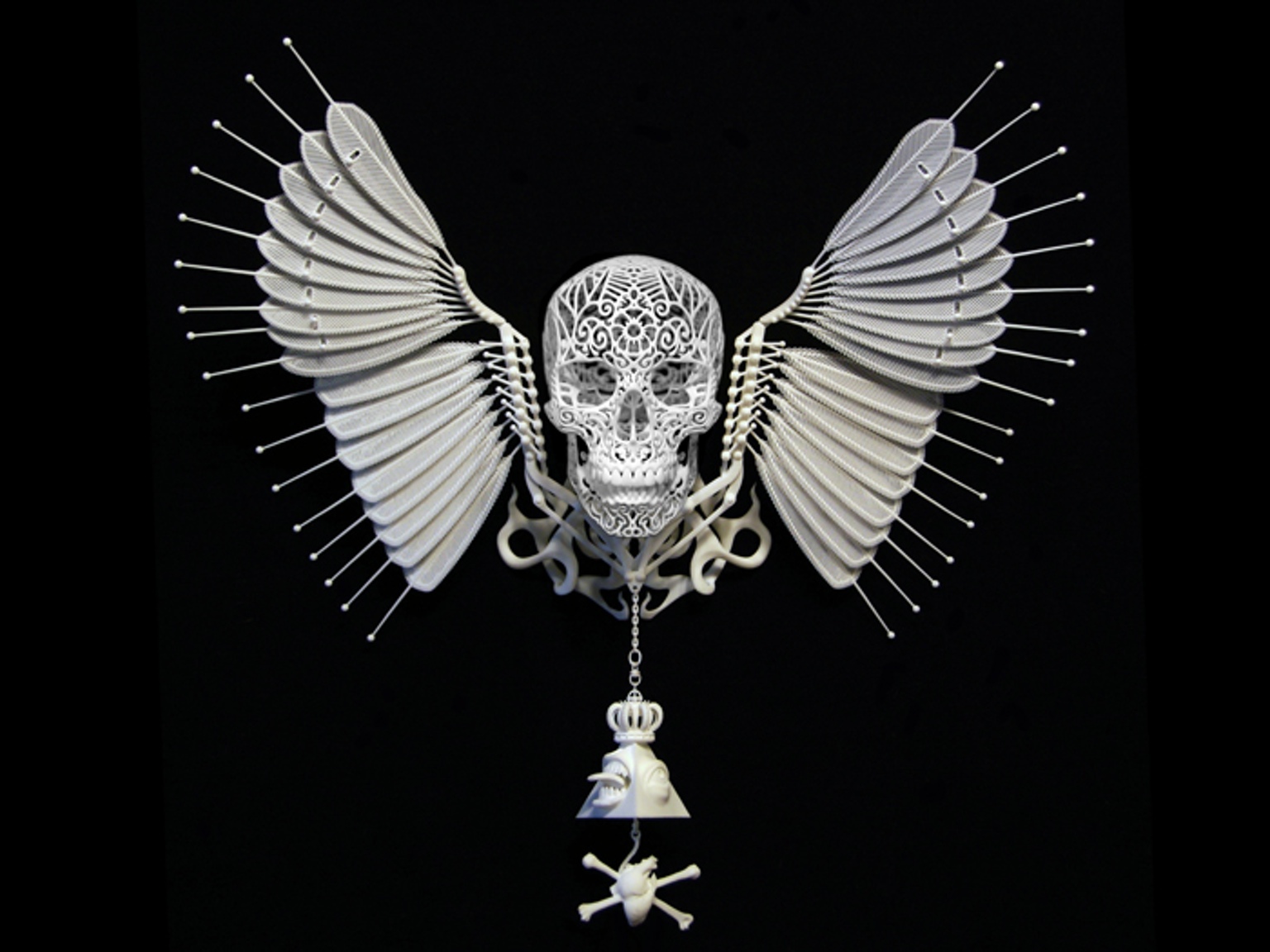
One of the most well-known 3D print artists is Joshua Harker, who has produced a number of incredible 3D prints that we’re sure you’ve seen.
Harder pioneered the use of Kickstarter to fund 3D printed art back in 2011 with his still-incredible Crania Anatomica Filigre, shown here:

He’s continued to produce even more impressive works in the time since then.
We caught up with the artist to get his thoughts on 3D printed art as it stands today.
Fabbaloo: You’re part of a growing number of artists focusing on use of 3D printing to deliver unique works to the public. Do you have a sense for this growth? Have you been seeing increasing numbers of artists turning on to 3D print techniques? Is there increased competition between artists?
Joshua Harker: There is definitely an increased use of the technology by artists but I’m not sure how to put a metric to it other than I just see a lot more of it. As far as competition I don’t really look at what other artists are doing as competition. Some of the work going on is amazing which I think is good for inspiring artists & good for the understanding & advancement of the technology. I do however see loads of copycat ripoffs absolutely everywhere. Many of the marketplaces aren’t bothered by representing & offering plagiarized work & I feel it undermines the original artists. They say you should be flattered to influence other artists but I don’t see it as much other than a blatant effort to capitalize. The copyright issues & associated lack of relevant laws in the current age are definitely something that needs to be navigated.
Fabbaloo: 3D printed art is still a new thing to some; have you found the technique universally accepted, or are there those who don’t get it?
Joshua Harker: It’s come a long way. Myself & others have shown in various museums & galleries, which I guess shows some kind of acceptance of the medium into the mainstream… “universally accepted” is a strong term however. There are many people & companies trying to capitalize on the hype but are not really doing anything innovative with the medium. It does not mean much to me just because something is 3D printed. It’s like boasting that something was injection molded… who gives a shit? I embraced 3D printing because it was the only way to create much of my work. My point overall is that I think the technology’s real value in the arts has been muddied with a flood of kitsch & student level experimentation that has been over lauded simply because it’s 3D printed. I think that is confusing to those trying to understand the medium & why it matters.
Fabbaloo: Your works are typically highly complex structures. How do you go about creating them? What software tools do you use? Would you use advanced 3D modeling tools, such as haptic feedback interfaces?
Joshua Harker: My original venture into using 3D printing as medium was for my tangle series. It was a way to incorporate the 3rd dimension with the surrealist practice of automatism that I was exploring extensively. So, my process is still very similar & I try to create as fluidly & as spontaneously as I would draw on paper. I use a variety of software depending on what I’m making & whether it’s organic, mechanical, or a combination. I wouldn’t say any of my tools are surprising… Blender, Onshape, Solidworks, 3DS Max, Zbrush etc. I’ve goofed with the haptic stuff in the past & although it adds a fun dynamic it just isn’t necessary in my opinion. I think if it was able to be tailored with settings that used the feedback to flag interference or min/max feature dimensions, etc., that would be really useful but the “feel” of digital clay is otherwise just gimmicky to me. The virtual reality environment is more exciting to me & I think would be more useful to me right now than haptics.

Fabbaloo: How do you go about printing your works? Do you prototype on inexpensive equipment before producing final copies on the best equipment?
Joshua Harker: The more inexpensive equipment unfortunately is typically unable to produce the geometries I make, so most of my work happens on the higher end machines. I used to own a couple of the large commercial Objet printers but I currently just outsource for my needs. With all the service bureaus out there now I have access to all that technology without having to deal with that level of investment. I’ve been working on developing my own technology for some time now but it’s an overwhelming endeavor without substantial funding. There’s now other processes that are able to produce similar results as what I’m trying to achieve so it’s always a check & balance regarding how much time & money I’m willing to continue to throw at the project.
Fabbaloo: For an artist considering moving into the 3D print space, what path do you recommend they follow? How does one begin producing 3D printed art?
Joshua Harker: Consider if the medium is necessary or if you’re just interested because its a fad. I can’t say it wouldn’t be beneficial for an artist experiment with it regardless, but a full on swan dive into 3D printing as a medium takes time & investment & may not do anything to make your work better. It really depends on what your vision is & what you’re trying to say. If you determine it is a good fit then I say just fuckin’ do it! Get some free software online & start playing. I recommend Blender, Sculptris, Onshape, or any of the freebie Autodesk stuff to get started. There’s tons more out there for free or demo so just try a bunch until you get a handle on what works for you. It’ll take time but there’s lots of online tutorials & forums to help push you through. Find a local 3D print shop or hacker/maker space & try printing some of your stuff out & learn from others.
Fabbaloo: What’s next for Joshua Harker?
Joshua Harker: I’d distanced myself a bit from 3D printing in the last year or so just because the scene got to be a bit boring & felt like much of the community started gnawing on it’s own foot. I’ve had other things I wanted to pursue so I ducked out. I’ve been integrating projection mapping & animation heavily into what I do & I have some exciting new projects coming up. One of which will bring 3D printing back to my work in a big way… likely with a return to crowdfunding to introduce it as well. I’m also putting together an initiative to bring smarter design into product packaging. It’s a slow process at this time given other project demands & I’m moving my studio soon as well. I intend to grow a really big tree & that doesn’t happen overnight.
Via Joshua Harker

